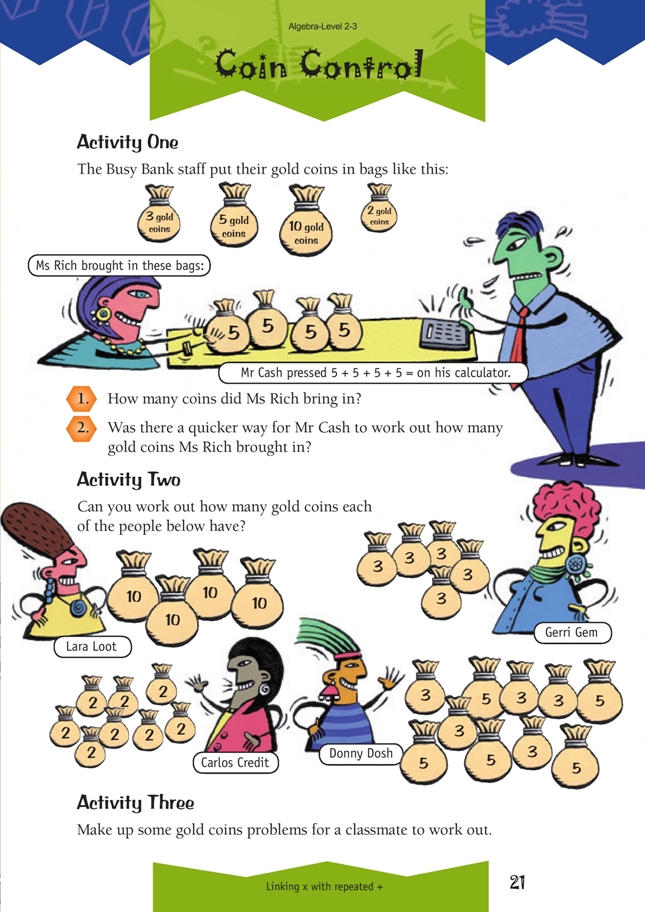This is a level 2 algebra strand activity from the Figure It Out series. It also has an achievement objective from the Level 2 Number strategies substrand.
A PDF of the student activity is included.
Click on the image to enlarge it. Click again to close. Download PDF (313 KB)
link repeated addition to multiplication
Activities One, Two, and Three
The aim of these activities is to get students to connect the operations of repeated addition with multiplication. This idea is critical at later levels for the development of direct rules that describe relationships. Encourage students to try to process the problems mentally at first. They can confirm their predictions later by using equipment models, such as bags of counters or multilink cubes.
It is important that you demonstrate the symbolic representations of these models. Some students may use equations without help, and their methods can be shared with others. Alternatively, you may need to demonstrate this recording.
For example, Carlos’ number of gold pieces can be written as:
2 + 2 + 2 + 2 + 2 + 2 + 2 + 2 = 16 or 8 x 2 = 16
Donny’s number of gold pieces can be written as:
3 + 5 + 3 + 5 + 3 + 3 + 5 + 5 + 3 + 5 = 40 or 3 + 3 + 3 + 3 + 3 + 5 + 5 + 5 + 5 + 5 = 40 or (5 x 3) + (5 x 5) = 15 + 25 = 40
It is important that students understand that the equals sign is a statement of equality and not a statement of “works out to be”.
You can help reinforce this idea of the meaning of the equals sign by reversing the way equations are conventionally written. For example, you could write 12 = 7 + 5 instead of 7 + 5 = 12, which suggests an “answer on the right hand side” view. Missing-number problems also reinforce the purpose of the equals sign, for example, 3 + = 8 and – 6 = 4.
Answers to Activities
Activity One
1. 20
2. 5 x 4 is quicker.
Activity Two
Lara Loot has 40 gold coins.
Gerri Gem has 15 gold coins.
Carlos Credit has 16 gold coins.
Donny Dosh has 15 + 25 = 40 gold coins.
Activity Three
Answers will vary.
